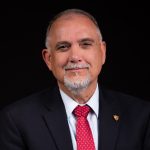Introduction: The Old Testament ends with a prophecy about the forerunner, John the Baptist. Malachi 4:5, 6 makes four points about this last of the prophets, who is also the first with an apostolic message. John operated in the early dawn, while night shadows still lurked, but with streaks of light coursing across the land giving three-dimensional reality to the shadows. Malachi brought these traits to the front.
1. His ministry would be in some sense a reminder of that confrontive and iconoclastic ministry of Elijah. Indeed Jesus said in Matthew 11:14, “And if you are willing to accept it, he is Elijah who is to come.”
2. His appearance will be “before the great and awesome day of the Lord.” When John’s disciples came from John to ask Jesus if he were indeed the one that was to come (Matthew 11:2, 3), Jesus sent back word about the evidences of his messiahship in healing those considered beyond hope as well as raising the dead and, most amazing of all, “the poor have the good news preached to them.” He appeared in such lowly form and did these splendid deeds while bearing the external form of a servant (Philippians 2:7). Because these things did not have the appearance of “great and awesome” did not diminish their intrinsic meaning. The “great and awesome” manifestation will certainly be in the day when he “shall come in trumpet sound;” in the meanwhile, “Blessed is the one who is not offended by me” (Matthew 11:6; cf. Isaiah 8:14, 15).
3. He will ”turn the hearts, etc.” which means that his message will be one of repentance, a key component of the text for this week. To turn the hearts indicates that a deep work of transformation will be connected with the message of this Elijah. No mere external conformity to social expectations will do, but a fundamental change of the affections which are the spring of all true relationships, both to God and man.
4. “Lest I come and strike the land with a decree of utter destruction” (4:6) If this fundamental change does not occur, all that remains is wrath. Repentance has such a vital relation to redemptive restoration that the main message of the forerunner was just that bit of gospel truth.
I. Matthew 3:1-3 – John is identified in the text as one prophesied to precede immediately the coming of the promised one, the Messiah,
A. These verses immediately identify John as the person spoken of in Malachi. His message was “Repent”—that is, he called for the turning of the heart. He based this message on his knowledge that “The kingdom of heaven is at hand.” The “great and awesome day of the Lord” hovered on the threshold of this generation. It could be for judgment of enemies or for inclusion of friends, but the effects of its coming were not to be avoided.
B. Matthew also points to the text of Isaiah 40:3 as effectively fulfilled in John. Zechariah, John’s father, had seen this at his birth and makes reference to the momentous events that surely accompany this time of fulfillment. Note how Zechariah delineates the significance of John. (Luke 1:76-79)
1. “Prophet of the Most High” –
2. “Go before the Lord to prepare his ways.” Zechariah gave a clear reference to Isaiah 40:3. The Lord whose way he prepared then would give:
3. “Knowledge of Salvation to his people” – He would give a knowledge that was experiential, not just a cognitive recognition that salvation was possible, but the true experience of it.
4. “The forgiveness of their sins” – This would consist primarily of the forgiveness of sin for such is the precursor of all other blessings of salvation – “In whom we have redemption through his blood, the forgiveness of our trespasses” (Ephesians 1:7).
5. “Because of the tender mercy of our God.” Fundamental to forgiveness and salvation is the mercy of God, the disposition to forego merited punishment in light of a more pressing purpose and the demonstration of an attribute that otherwise would remain hidden :”But God, being rich in mercy, because of the great love with which he loved us” (Ephesians 2:4). “Not by works of righteousness which we have done, but according to his mercy, he saved us “ (Titus 3:5).
Zechariah mentions three other blessings of the messianic reign [sunrise (see Malachi 4:2, . . . to give light, . . to guide our feet].and shows his confidence that John’s preparatory work would issue in the Lord’s work of redemption.
C. The coming of Christ as Messiah is verified, not only in the specific prophecies that Jesus fulfilled, but in the prophecies fulfilled by those around him—specifically John the Baptist. The likelihood of these two streams of prophecy being fulfilled by merely coincidental confluence of events is so astronomical as to defy any attempt to ignore them as unworthy of a serious-minded person. This is why Jesus identified himself so closely with the ministry of John the Baptist. Though he needed no repentance, he put himself in the place of a sinner and in complete compliance with the veracity of John’s message. In his immersion, he prefigured his death, burial, and resurrection as the Lamb of God who takes away the sin of the world (John 1:29).
II. The single-mindedness of John – Verses 4-6.
A. He took little time thinking about either clothes or food. Luke summarized his life prior to this time in the simple language: “And the child grew and became strong in spirit, and he was in the wilderness until the day of his public appearance to
B. The simplicity of his clothes and food showed that he focused on one thing only. This sets a theme we meet in other places in Matthew. For Jesus words about this issue see Matthew 6: 25-34. If we are children of the kingdom, and Jesus’ kingdom is not of this world, we need not fret about clothes and food. The world does plenty of that, for attire and eating pleasure constitute much of its understanding of status. What shall we eat? What shall we put on? These questions occupy an inordinate amount of time and energy far out of proportion to their importance. “Now there is great gain in godliness with contentment, for we brought nothing into the world, and we cannot take anything out of the world. But if we have food and clothing, with these we will be content” (1 Timothy 6:6-8). For his purposes, John had chosen an abstemious life; on appropriate occasions, Jesus would eat more elegantly when his witness could be extended through it [Luke 7:34-36; also Luke 10:38-42]. His attire was not that of a wilderness hermit, but of a Galilean peasant, produced with consummate craftsmanship (John 19:23).
C. John’s focus was on the truth of his message and practical implications of his call to repentance. His preaching, arising from an unalloyed earnestness and a clear vision of truth, stirred the entire area. Spiritual revival was occurring. Jesus said that John was a “burning and shining lamp.” He issued calls similar to those of the Old Testament prophets before him, but the people heeded them not. (See Joel 2:12, 13; Jeremiah 3:12-14). For a while, at least, the people heard John and responded (John 5:35).
D. John, having received his baptism from heaven (Matthew 21:24-27), is administering a symbol of cleansing unto newness of life through immersion upon the peoples’ confession of sin. This is a foretaste of the new covenant in which the people of God are identified by a spiritual reality, confession of sin, rather than ethnic and ceremonial continuity. We will see an intensification of that point in the next verses.
E. Spurgeon points to John’s proclamation in the wilderness as symbolic of the necessity of the living word to overwhelm our spiritual barrenness.
III. The new covenant message of John – verses 7-10
A. John uncovers the heartless formalism of the Pharisees. This exposure of the Pharisees and all hypocritical ceremonialism is a recurring theme of the book of Matthew and of Jesus’ ministry. See 12:1ff; 15:1-20; 21:12, 28; 23.
B. John confronted them with the reality that their dependence on mere ethnicity was doomed to bring them to damnation. They had come for baptism, but only because this would give them further credibility with the people who regarded John as from God. John saw through their impurity and warned them the substitution of one external ceremony [baptism] for another [circumcision] would only increase their burden of sin unless they were brought to heartfelt sorrow for sin and a realization that they stood in need of forgiveness. So it is that infant baptism has no warrant either in Scripture as a command or in the nature of baptism as a testimony of bearing fruit in keeping with repentance.
C. Being children of Abraham by natural genealogy has no more advantage spiritually than if they had been made children of Abraham by an exertion of divine power on the stones that lay on the ground around them. Their merely natural descent from Abraham gives no more warrant to be his spiritual seed than the transformation of a stone to a person. The hearts of both would be equally hard.
D. “Even now.” This message of John inaugurates the identification of God’s people by their spiritual traits. The giving of a new heart by the Spirit of God (Ezekiel 36:26) is the only way by which a person can see his need for forgiveness of sin and thus be brought to repentance. As Jesus told Nicodemus, “Unless a man is born again, he cannot see the
E. The axe is laid to the root and non-fruitbearing trees are cast into the fire. Jesus extended this same teaching in the Sermon on the Mount (Matthew 7:15-19). The people that Christ gathers for himself by his redemptive passion and the sending of his Spirit is a people who desire to live “godly lives in this present age [being]zealous of good works” (Titus 2:12,14).
IV. The christocentric message of John – verse 11, 12.
A. A comparison between John and Jesus
1. The difference in their baptisms.
John baptized with water upon evidence of sincere repentance.
Jesus gives the baptism prior to the water baptism, the purging power of the regenerating work of the Holy Spirit.
2. Jesus is both mightier and has greater intrinsic worth than John the Baptist. Among those born of women none is greater than John the Baptist, so said Jesus (Matthew 11:11). But the least in the kingdom of heaven is greater than he. John marked a transition from the prophetic period to the apostolic/new covenant period inaugurated by the life, death, and resurrection of Jesus. John’s greatness related to his being the last of the prophets, Unlike all preceding prophets, John actually would see the Messiah, point to him in the flesh, and even initiate him into his ministry of the kingdom of God. Jesus effects this kingdom by his victory over sin, death, and hell and the placement of all his enemies under his feet. His subjects, subdued and made his own by his kingly power, are greater than John the Baptist because of the expanded knowledge they have of the glory of the Messiah, even far beyond that of the most far-seeing prophets (1 Peter 1:10-12)
B. The Christ will take authority over his own kingdom, building it with pure wheat while cleansing all else away. Note the personal work accomplished: “His winnowing fork . . . his hand, . . . his threshing floor . . . his wheat.”
C. Here we see in clear imagery both the justice and the mercy of God. As the prophecy of Malachi said (Malachi 3:16-4:6), if the heart is not turned, all that remains is the fearful prospect of judgment unto condemnation, a “decree of utter destruction.” God will make clear the “distinction between the righteous and the wicked, between one who serves God and one who does not serve him” (Malachi 3:18). For those, however, who ”feared the Lord” the sun of righteousness has not only judgment but “healing in its wings.” They will be gathered as precious wheat and remain forever as his “treasured possession” (Matthew 3:12; Malachi 3:17).

















